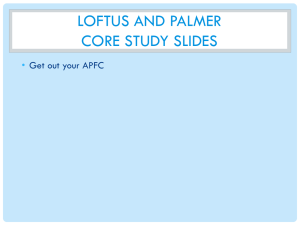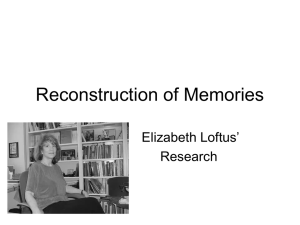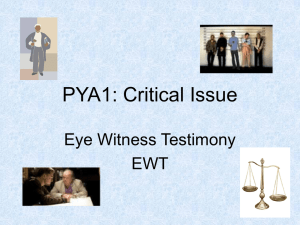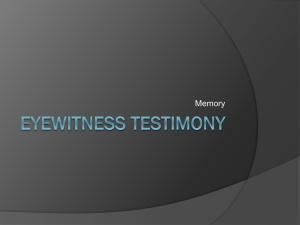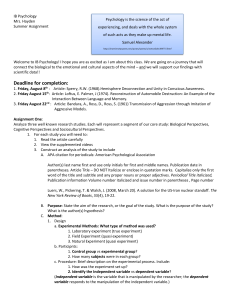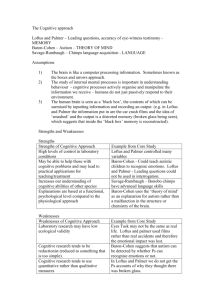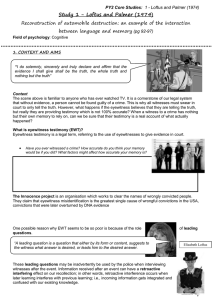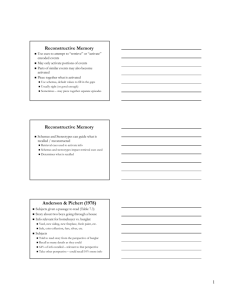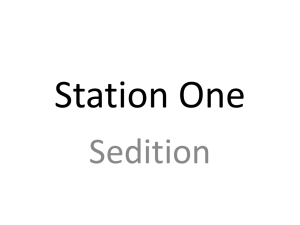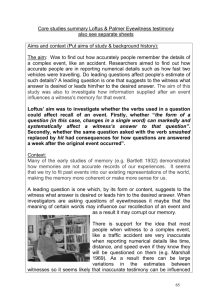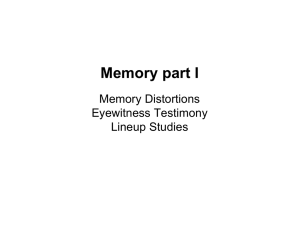loftus and palmer 2015PPH
advertisement
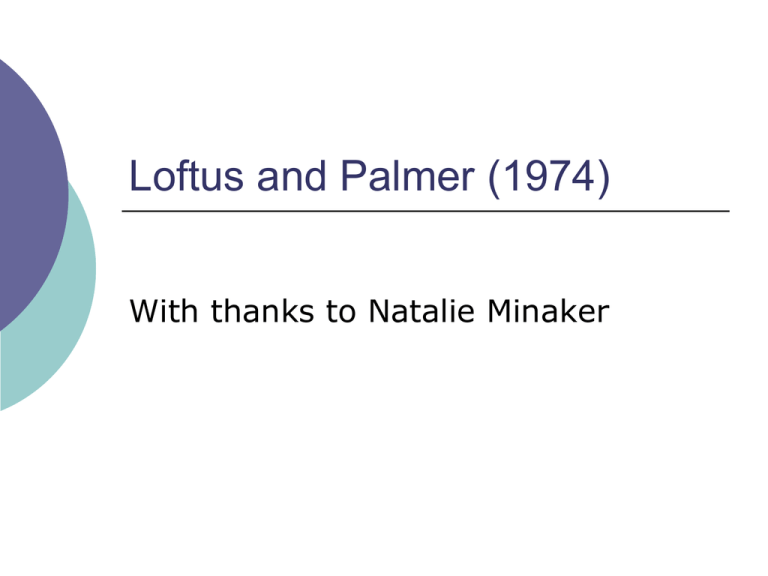
Loftus and Palmer (1974) With thanks to Natalie Minaker Loftus and Palmer (1974) Reconstruction of automobile destruction: an example of the interaction between language and memory Field of psychology: Cognitive Type of study: Laboratory experiment Aim and Context https://www.youtube.com/watch?v= VkrrVozZR2c •How accurate do you think the Eyewitness testimony of these people would be? Aim and Context “I do solemnly, sincerely and truly declare and affirm that the evidence I shall give shall be the truth, the whole truth and nothing but the truth” •Have you ever witnessed a crime? How accurate do you think your memory would be if you did? What factors might affect how accurate your memory is? Why is it important? The Innocence project An organisation which works to clear the names of wrongly convicted people They claim that eyewitness misidentification is the greatest single cause of wrongful convictions in the USA, convictions that were later overturned by DNA evidence. What are leading questions? “A leading question is a question that either by its form or content, suggests to the witness what answer is desired, or leads him to the desired answer. Elizabeth Loftus Why are they a problem? Retroactive interference Incoming information is integrated and confused with existing knowledge Our mind does not work like a camera Marshall (1969) Air Force personnel, observed a car travelling at 12 mph. Their estimates ranged from 10 to 50 mph. 1: Given that there are such a range of estimates, it suggests that there might be variables which may cause these inaccuracies such as the phrasing of a question to elicit a judgement of speed 2:? Filmore (1971) Suggested that the words smashed and hit may imply different rates of speed. These words lead the listener to assume different consequences to the impacts to which they are referring, with hit being perceived as gentler than smashed. Aims Loftus and Palmer’s experiment was actually two experiments. They wanted to investigate in general how accurate or inaccurate memory was. Specifically they wanted to see questions upon the effect of leading ______________ estimates of speed ______. Aims Experiment 1 See if the speed estimates would be influenced by the wording of the question asked. Hit vs Smashed Aims Experiment 2 To see if the leading questions just changed the responses given to the questions, or whether the participant’s memories had actually altered as a result of the leading questions. Procedures Loftus and Palmer carried out two experiments. You need to know detailed procedures for both of them, as well as participant numbers. Use the information on page 93 and the text on the right (taken from the original article), complete the summary table for experiment 1 and 2 on the next page. Put the steps of the procedure of experiment 1 into the correct order. Procedures Q1: Why were the participants not told about the true aims of the study? Q2: Why were the participants given a series of questions rather than just the critical question alone? Q3: What was the point of having a control group in the second experiment? Findings and conclusions Draw two graphs Summarise the results Write in the conclusions Evaluate the methodology Work together Critically assess with reference to alternative evidence Match up the study with the description of what the results mean Use three colours to highlight research that supports, contradicts, or develops Loftus and Palmer’s research.
